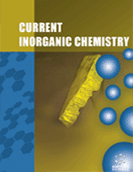Abstract
The study of thiosemicarbazones and their metal complexes has become a fruitful area of the coordination chemistry due to the interesting properties exhibited by these compounds, in particular those dealing with the biological activity. Our efforts have focused on the structure-properties relationship in copper(II) derivatives of pyridine-2- carbaldehyde thiosemicarbazone. Usually, this molecule acts as a NNS terdentate ligand and gives rise to [Cu(HL)]2+ / [CuL]+ rigid planar blocks, which can form dimers by bonds through the thiosemicarbazone S atom (S-bridged systems) or the X atom belonging to different coligands (X-bridged systems). Such structural features, together with the high stability of these compounds, allow the synthesis of complexes with small structural modifications. This fact has prompted us to carry out systematic studies in which variations of physic and chemical parameters (as pH, temperature or reactants present in the reaction medium) induce changes in the ligand or modify the structural, spectroscopic and magnetic properties of the complexes. In this sense, an appropriate choice of ancillary ligands (halides, oxalate, carboxylates, polyoxometalate or biomolecules, among others) is essential to attain different behaviors. Oxalato derivatives with relatively high ferromagnetism and unusually twisted carboxylato groups, structures of thiosemicarbazone-polyoxometalate hybrid systems and nucleic acid base-thiosemicarbazone complexes, reactivity with glutathione, interaction and cleavage of DNA and biological activity against tumoral cell lines are some of the aspects discussed here. Some conclusions of our research can be extrapolated to a broad range of compounds.
Keywords: Carboxylato complexes, coordination compounds, copper, magnetic properties, spectroscopic properties, structure, polyoxometalate, thiosemicarbazone, Pyridine-2-Carbaldehyde, Thiosemicarbazone copper(II) System
 7
7

